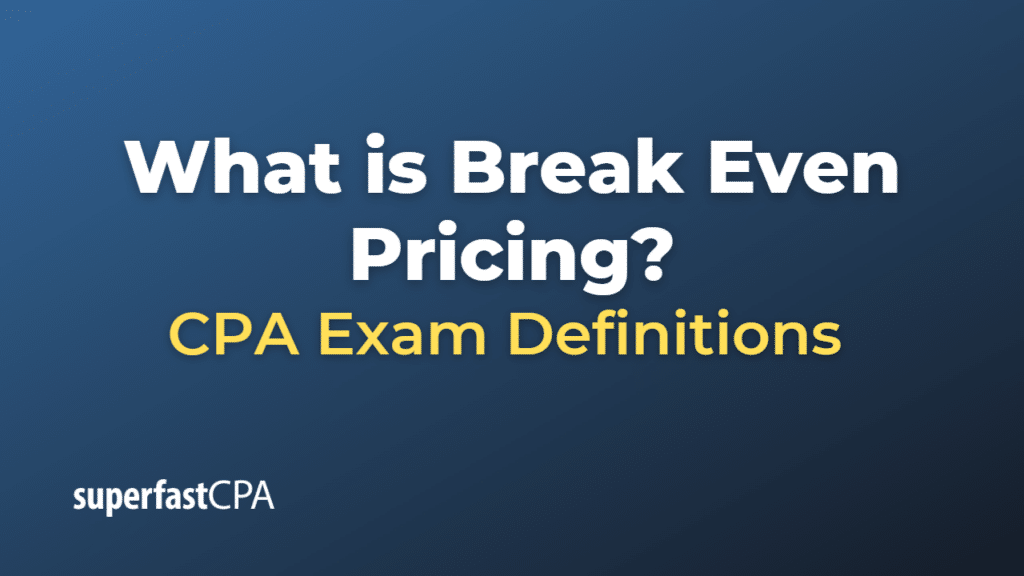Break Even Pricing
Break-even pricing is a strategy in which a business sets the price of its products or services to cover all its costs, including fixed and variable expenses. In other words, the price is set to ensure that the company’s total revenue equals its total costs, achieving a break-even point where it neither makes a profit nor incurs a loss.
This pricing approach can be useful for businesses in several scenarios, such as:
- New businesses or products: Break-even pricing can help a new business or product to gain a foothold in the market by setting an initial price that covers costs without necessarily aiming for immediate profits. This approach can help the business gain market share, establish brand recognition, and build a customer base.
- Competitive markets: In highly competitive markets, businesses may adopt break-even pricing to maintain their market position and prevent losing customers to competitors. This pricing strategy can help a company stay viable until market conditions change, allowing for higher profit margins.
- Cost recovery: In some situations, a business may prioritize recovering its costs over making a profit. For example, a company may use break-even pricing to sell off obsolete inventory or recover costs from a failed project.
It is important to note that break-even pricing should not be considered a long-term pricing strategy for most businesses, as it does not generate profits. Rather, it is often used as a temporary measure to achieve specific short-term objectives or as a starting point for a more comprehensive pricing strategy.
Example of Break Even Pricing
Let’s consider a fictional bakery called “Tasty Pastries,” which has recently launched a new line of gourmet cupcakes. The bakery wants to use break-even pricing to recover its costs and gain market share before focusing on making a profit.
The following information is available for Tasty Pastries’ gourmet cupcakes:
- Fixed costs: $3,000 per month (includes additional equipment, marketing, etc.)
- Variable costs: $1.50 per cupcake (includes ingredients, packaging, etc.)
- Desired sales volume: 2,000 cupcakes per month
To calculate the break-even price, we first need to find the total cost per cupcake. This can be done by dividing the fixed costs by the desired sales volume and adding the variable cost per unit:
Total Cost per Cupcake = (Fixed Costs / Desired Sales Volume) + Variable Cost per Unit
Total Cost per Cupcake = ($3,000 / 2,000) + $1.50
Total Cost per Cupcake = $1.50 + $1.50
Total Cost per Cupcake = $3.00
Tasty Pastries will set the break-even price for its gourmet cupcakes at $3.00, which will cover both fixed and variable costs without generating a profit. By using this pricing strategy, Tasty Pastries aims to attract customers, establish brand recognition, and gain market share.
Once Tasty Pastries has achieved its initial objectives, it may consider adjusting its pricing strategy to generate profits. This could involve raising the price of the cupcakes or finding ways to reduce costs, such as by increasing production efficiency, negotiating better deals with suppliers, or finding more cost-effective marketing channels.













